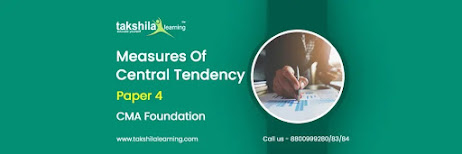Measures of Central Tendency
A measure of central tendency is a solitary attribute that attempts to represent a bunch of data by distinguishing the focal situation within that information collection. In that ability, focal inclination proportions are called focal area proportions once in a while. They are known as outline observations, too. In all probability, the mean (also called the average) is the proportion of focal inclination that you are usually familiar with, but there are others, such as the middle and mode. The mean, median, and mode are essentially legitimate proportions of focal inclination, although a few proportions of focal tendency become more appropriate for use than others under different conditions.
Mean
The most common and prominent proportion of focal inclination is the mean (or average). It can be used very well for both discrete and continuous information, despite the fact that its use is constant information on a regular basis. The mean is equal to the quantity of the relative multitude of characteristics in the information index, divided by the quantity of characteristics in the information set. So, if we have values in a data set and they have values of X1, X2,.....Xn, the mean sample, typically denoted by, is given as follows:
The average is essentially a model of your set of information. The value is typically natural. Nevertheless, you can see that the average is not one of the real qualities you have seen in your knowledge index on a regular basis.
Nevertheless, one of its essential features is that it limits mistakes in the information collection in the expectation of any single reward. That is, the value of all the different characteristics in the knowledge index provides the smallest measure of error.
A significant feature of the average is that each one remembers an opportunity as a computational feature for your knowledge collection. The mean is also the key proportion of focal inclination where there is consistently zero in the sum of the deviations of each reward from the mean. The average has one key drawback: it is especially vulnerable to the effects of outliers. These are values that, by being extremely small or high in numerical value, are unique compared with the rest of the data set.
Any other moment when we normally tip over the mean (or mode) to the median is the point at which our data is slanted (i.e., the recurrence dispersion for our information is slanted). If we think about the normal conveyance, since this is the most frequently surveyed in insights, the mean, median and mode are indistinguishable when the data is fully standard. Furthermore, they all apply to the most common reward in the knowledge index. Nevertheless, when the data becomes slanted, the average loses the ability to give the information the best focal area on the basis that the slanted information takes it away from the average value.
Median
The median is the middle score for a bunch of information that has been orchestrated arranged by extent. The middle is less influenced by exceptions and slanted information. To compute the middle, assume we have the information underneath:
Here, at Takshila Learning, we offer CMA foundation study material, CMA Foundation Online Classes via CMA Foundation Video Lectures and Online Lecutues for Professional Courses, i.e., CA Course / CS Online Classes / CMA online classes / ACCA IFRS , & Skill Development courses.
Visit-https://www.takshilalearning.com/ OR call us @ 8800999280/83/84
Email Us @ info@takshilalearning.com





Comments
Post a Comment
Thank you we will contact ASAP.